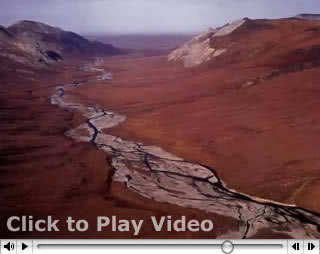|
Wild Lands

This arctic wilderness is a place of extraordinary beauty and great fragility whose value for all Americans far exceeds the limited supply of oil that can be extracted from it. This nineteen million acre wildlife refuge is a treasury of the planet's genetic heritage. The loss of wilderness and the degradation of vital habitat in such places as Prudhoe Bay and Prince William Sound due to oil development and oil spills stand out in stark contrast to the untouched grandeur of America's largest remaining wildlife refuge. The construction and pollution that would accompany the proposed taking of oil from the Arctic National Wildlife Refuge would irreversibly degrade its tundra and spoil the transparent rivers flowing through its coastal plain.
Even without the intrusion of oil extraction technologies, the refuge is already affected by the burning of fossil-fuels around the Earth; for its climate, lands and waters are more drastically altered by global warming than are latitudes farther south. As physicist Freeman Dyson writes, "The warming mainly occurs where air is cold and dry, mainly in the arctic rather than in the tropics." Because the build-up of carbon dioxide in the atmosphere "is mostly making cold places warmer rather than making hot places hotter," it has numerous visible effects on America's north shores. An average temperature increase of 7º over the last 30 years has thinned the arctic ice pack by 40% since 1960. Glaciers are shrinking and coastlines retreating, accompanied by changes in the patterns of plant and animal life. Looking from this rare and pristine place on the north coast of North America it becomes clear that humanity is walking on thin ice.
While the impact of global warming is most visible in the arctic, with the McCall Glacier, for example, having lost more than thirty feet in depth over the last forty years, the Earth's mean temperature has been increasing, intense storms are becoming more frequent, and some areas have experienced more flooding and longer droughts than ever before. Effects of global warming that are expected to be felt around the planet in the decades to come include:
- the disappearance of Pacific islands
- the flooding of coastal cities
- the migration of plants and animals, and
- changes in growing seasons for agriculture
The alteration of Earth's climate is likely to accelerate, irreversibly, unless individuals around the world, their nations, and international institutions participate in the solution.
Fortunately there are many ways to be part of the solution. |

